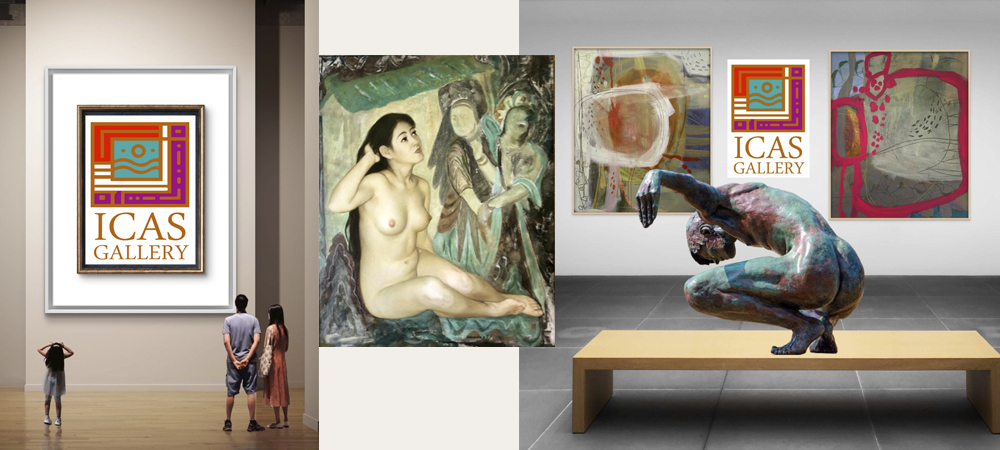Benin Bronze Mask
The story of the Bronze Age from the year 1200
We explore the remarkable legacy of the Bronze Age, with a focus on the renowned Benin bronzes. These exceptional artworks are a testament to the advanced artistic techniques of the Benin people, as well as a reflection of the enduring tradition of bronze casting in West Africa. This tradition’s roots can be traced back an astonishing two millennia to the ancient Nok people, who inhabited the plains of Jos in present-day Nigeria.
The Nok people were renowned for their masterful bronze casting, a skill they utilised to craft intricate sculptures and diverse art forms. As the centuries passed, the art of bronze casting spread throughout the region, with the Yoruba people of South and West Nigeria also gaining prominence for their expertise in this craft. Flourishing between the 10th and 19th centuries, the Yoruba created bronze artworks that depicted historical events, royalty, and religious rituals with remarkable finesse.
The Benin people, who established the Kingdom of Benin in the 13th century, carried forward this rich tradition and developed advanced techniques for bronze casting. This period, known as the Benin Bronze Period, gave rise to some of the most elaborate and intricate bronze sculptures and plaques in West Africa. Many of these artworks depicted pivotal historical events and revered figures while also playing a vital role in the religious practices of the Benin people, serving as altars and ceremonial objects.
The tradition of bronze casting in West Africa has persisted and thrived into the present day. Many contemporary artists and artisans keep these ancient techniques alive, contributing to the region’s rich tapestry of bronze artistry. The Benin bronzes are:
- A living testament to this long and storied tradition.
- Underscoring the exceptional skill.
- Boundless creativity.
- The profound cultural significance of the artists and artisans of the region.
These exceptional artworks continue to captivate art enthusiasts and scholars alike. The art of Benin holds a unique position, as it shares stylistic similarities with contemporary Buddhist art from India and Southeast Asia. While it remained largely unknown outside of Africa until the 1900s, African sculpture, particularly the Benin bronzes, significantly influenced Western art. Renowned artists such as Henry Moore, Georges Braque, and Pablo Picasso drew inspiration from African sculpture designs and their striking forms.
The Benin bronzes, a remarkable collection of bronze heads created in honour of the ‘Obas’ (Kings), have been handed down through generations of rulers. These ‘Obas’ held hereditary positions of absolute spiritual, political, and military power, tracing their ancestry back to a God-like figure. The Benin Kingdom’s illustrious history dates back to the 12th century AD, with its ruling dynasty tracing its origins to the earlier Yoruba Kingdom of Ife. By the 16th and 17th centuries, it had blossomed into a highly developed culture before the scourge of the slave trade initiated a gradual decline.
The late 1800s saw the Empire weakened, marked by nine battles against the British between 1807 and 1901, culminating in British control and domination. In 1897, during a campaign known as the ‘punitive expedition,’ British forces attacked and destroyed the City of Benin. This campaign resulted in the looting of the Benin palace and the appropriation of a significant number of high-quality bronze sculptures, many of which now reside in British and German museums. While this loss was a poignant chapter in the history of Benin’s bronzes, some figurines were saved, having been buried with King and Queen Inyang Inyang and later recovered by the Government, now housed in Nigeria’s leading museum, serving as a poignant reminder of this extraordinary heritage.
Intricately tied to the history of West Africa and the enduring spirit of its people, Benin’s bronzes remain invaluable artefacts that provide an enriching glimpse into the region’s past, artistic brilliance, and cultural resilience.”
ART NEWS VIDEOS & PUBLICATION
THE CULTURE OF THE BENIN BRONZE CIVILISATION
ICAS Vilas Art Gallery
21 Commerce Way
Garden Square Shopping Centre, Letchworth Garden City, Hertfordshire SG6 3DNUnited Kingdom (UK)Phone: 01462677455
Email: info@vilasart.co.uk
ICAS Vilas Art Gallery
Garden Square Shopping Centre,
Email: info@vilasart.co.uk




